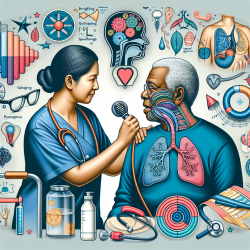Affective prosody—the emotional tone in our speech—plays a critical role in effective communication. However, individuals who suffer from acute right hemisphere stroke often experience challenges in recognizing these emotional cues, a condition known as receptive aprosodia. Recent research titled "Explicit Training to Improve Affective Prosody Recognition in Adults with Acute Right Hemisphere Stroke" offers promising insights into how explicit training can aid recovery.
The Importance of Affective Prosody
Affective prosody involves elements such as pitch, volume, rate, and rhythm that convey emotions beyond the literal meaning of words. When this ability is impaired due to stroke-induced right hemisphere damage, it can lead to significant communication breakdowns and reduced quality of life. This impairment is not only prevalent in stroke survivors but also affects individuals with other neurological conditions like dementia and traumatic brain injury.
Research Findings on Explicit Training
The study conducted by Durfee et al. (2021) focused on an explicit training protocol aimed at improving affective prosody recognition in adults with receptive aprosodia due to acute right hemisphere stroke. The research involved 18 participants who underwent training sessions targeting perceptual and conceptual processes underlying prosody recognition.
- Training Effectiveness: The study found significant improvements in affective prosody recognition following the training sessions. Participants showed higher recognition accuracy for pseudo-word sentences compared to real-word sentences.
- Lesion Influence: The effectiveness of the training was influenced by lesion characteristics, with perceptual deficits linked to posterior infarcts and conceptual deficits associated with frontal infarcts.
- Considerations for Practitioners: Speech therapists should consider factors like linguistic context and lesion location when planning prosody training for patients.
Practical Implications for Practitioners
The findings suggest that explicit acoustic-prosodic-emotion training can be an effective intervention for improving affective prosody recognition. However, it may not be suitable for everyone. Practitioners should tailor their approach based on individual patient needs, considering factors such as lesion location and the severity of perceptual or conceptual deficits.
For speech-language pathologists working with stroke survivors, integrating these research insights into practice could enhance therapeutic outcomes. Additionally, exploring further research on implicit or contextual training methods could provide alternative strategies for patients who do not respond well to explicit training.
Encouraging Further Research
This study lays the groundwork for future research into affective prosody recognition and its rehabilitation. As more is understood about the neural mechanisms involved, more targeted and effective interventions can be developed.










